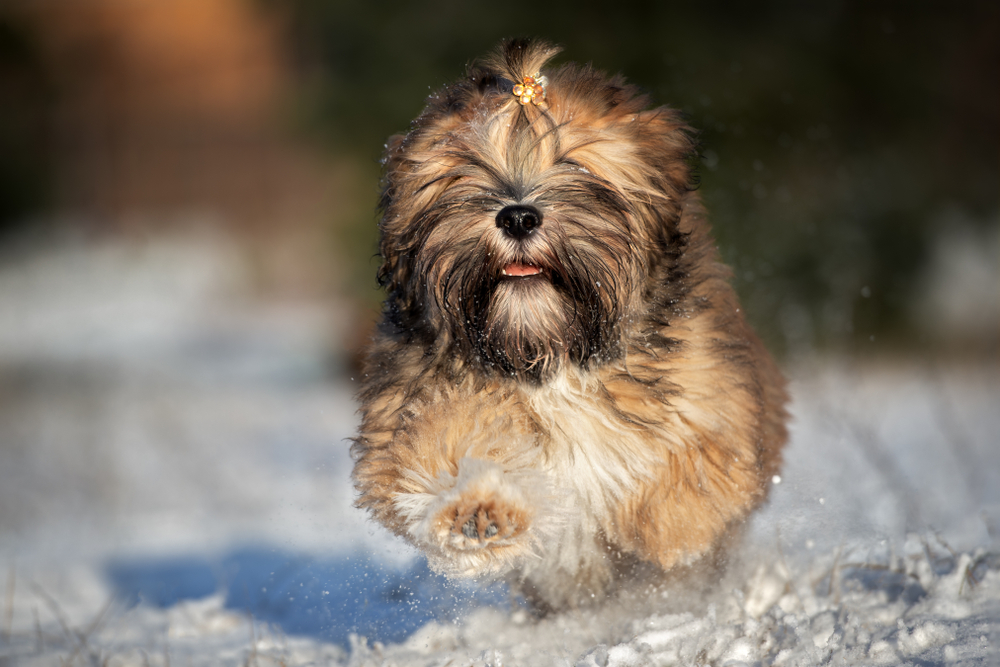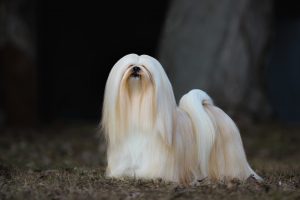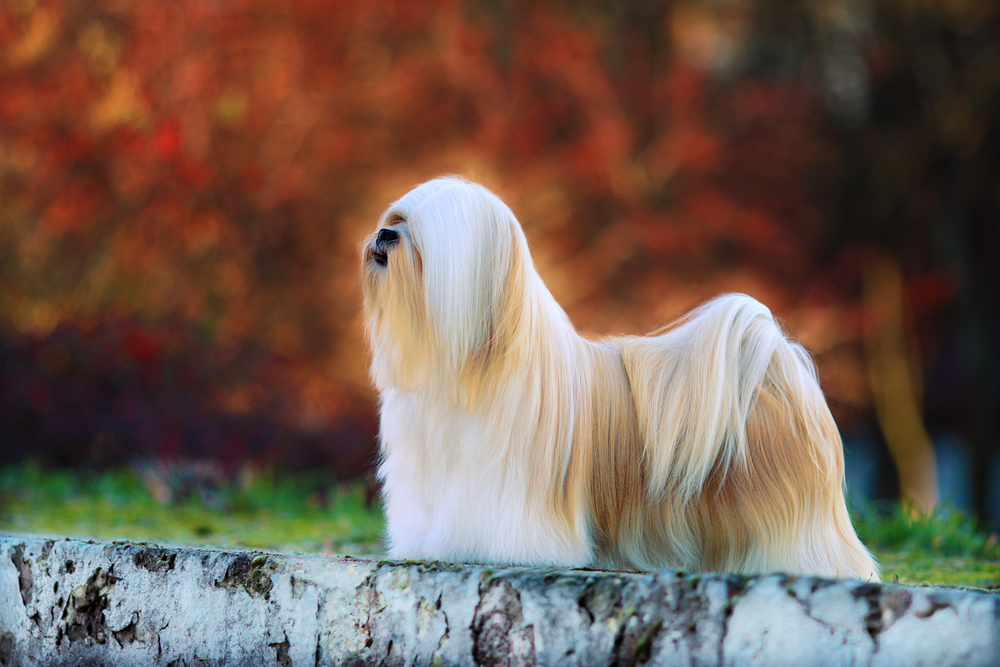
Lhasa Apso – Utility

| Name | Lhasa Apso - Utility |
|---|---|
| Size | Small |
| Grooming | A lot of Grooming/Strict Grooming |
| Training | Very Difficult |
| Exercise | Daily walks |
| Origins | Tibet, China |
The Dogs Associated with the Mythical Snow Lion!
Quick Overview
The Lhasa Apso, for the most part, is a relatively small dog but a dog that is known for being quiet sturdy with a long and dense double coat! This breed of dog is known to be very playful and happy all the time, alongside this however, very independent and can be quiet mischievous. This dogs history is large, dating back to thousands of years ago. This one dog breed can be used for excels as hearing dogs for those who have hearing issues and or loss of hearing!
Name: Lhasa Apso
Size: 10 to 12 inches at the shoulder
Weight: 12 to 18 lbs
Grooming: Dense double coat
Exercise: Daily walks, with games
Training: Hard to Very Difficult
Origins: China
Lifespan: 12 to 15 years
Breed Type: Terrier
History of the Lhasa Apso Breed
Lhasa Apso originated from Tibet, China in, or around, 800AD and then evolved for the climate of the Himalayas. For the most part, this breed was used as indoor creatures as watchdogs of temples and palaces, as they were great at hearing and would alert the monks if anyone got past the exterior guard dogs! This dog was known as the "Bark Lion Sentinel Dog" in Tibet and has a long history as a guard dog.
After a while of being a great guard dog for monks, they started to gradually come to the Western world during the early 1900s. They were recognised as the Lhasa terrier 10 inch type by the Kennel Club in London in 1908. After many years, in the 1930s, Lhasa's were given as a gift from the Dalai Lama to American Charles Suydam Cutting, this was a world traveller! In 1935, the Lhasa Apso were registered into the American Kennel Club as the Lhasa terriers but were renamed to the Lhasa Apso 10 years later.
Fun Facts About Your Lhasa Apso Dog!
Love them or hate them, here are some Five Minutes Spare hard facts that may or may not entertain you:
- The Lhasa Apso were associated with the Mythical Snow Lions!
- This is due to them being guard dogs for many years, the Tibetans believed that this dogs were the guardian of their country as they were associated with the Mythical Snow Lions!
- Before entering the US and UK, there were known as an ancient breed.
- The Lhasa Apso has the longest history in the country of origin. Existing from at least 800AD
- They came to the US as gifts from the Dalai Lama
3 fun facts that some people may not of known about this rare type of dog!
Are They Hard to Train?
It is said that these dogs are very difficult to train, as they have a mind of its own and strong-willed nature and due to this, the training side of this will be hard for anyone. The dog breed is smart however so with the right methods and the patience... The training may be easier but this may not be the case for a while!
Do they Need lots of Exercise?
With this dog being small, the energy level is quite low, meaning they won't need much of a walk to keep them going, however they will still need to be walked daily like every other dog and play some games and have some fun activities.
How Often do I Groom my Lhasa Apso?
There has to be a routine for grooming this dog! The hair constantly grows and constantly grows too, so a regular grooming schedule or trimming and brushing is very important.
Are they Healthy Dogs?
This type of rare breed is known for being quite healthy but can have some issues surrounding health in the future. Some of the conditions they may be prone to are:
- Patellar Luxation
- Dislocation of the knee cap in dogs
- Keratoconjunctivitis sicca
- This is when the dogs has dry eyes
- Intervertebral disc disease
- This is to do with the herniated spinal discs and with this, this can cause a lot of pain for your dog
- Renal Dysplasia
- Abnormal kidney development
Got Five Minutes?
If you happen to still have Five Minutes Spare, you can head on over to our webpages. There you will find numerous articles on hobbies and interests, all sorts of other pets, and can even get your daily news by following us on Facebook. We can’t promise to change your life, but we can promise its a wise use of your next Five Minutes.

